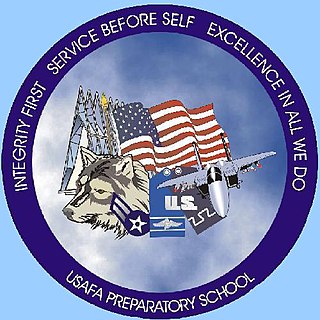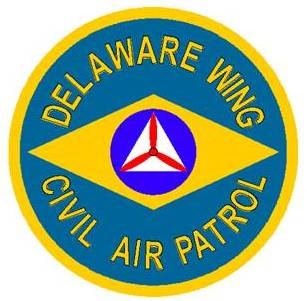
The Air Force Reserve Officer Training Corps (AFROTC) is one of the three primary commissioning sources for officers in the United States Air Force and United States Space Force, the other two being the United States Air Force Academy (USAFA) and Air Force Officer Training School (OTS). A subordinate command of the Air University within the Air Education and Training Command (AETC), AFROTC is aligned under the Jeanne M. Holm Center for Officer Accessions and Citizen Development at Maxwell AFB, Alabama. The Holm Center, formerly known as the Air Force Officer Accession and Training Schools (AFOATS), retains direct responsibility for both AFROTC and OTS.

The Arnold Air Society (AAS) is a professional, honorary, service organization. AAS is open to officer candidates in Air Force Reserve Officer Training Corps (AFROTC) and at the United States Air Force Academy (USAFA), and is formally affiliated with the Air Force Association (AFA). In addition to AFROTC or Academy commitments, AAS members must complete candidate training, attend meetings, and contribute to their respective Squadrons and ROTC detachments. Doing so enhances the officer candidate experience of cadets as well as builds stronger leadership, organizational, and professional skills.

The awards and decorations of Civil Air Patrol are "designed to recognize heroism, service, and program achievements" of members of Civil Air Patrol (CAP) of the United States of America. The CAP is the official auxiliary of the United States Air Force. These awards are made to improve the esprit de corps of members. These awards are all worn in the form of medals or ribbons and all are considered civilian decorations. Civil Air Patrol regulations allow them to only be worn and displayed on appropriate CAP uniforms. In order to be considered for one of these awards, an individual must be a member in good standing of Civil Air Patrol at the time of the act being recognized. There is a statute of limitations for these awards and all recommendations must be submitted within 2 years of the act being performed. It is possible for the next of kin of deceased persons to be presented awards to which a member was entitled, but which he or she did not receive. Award review boards are established at the region, wing, group, and squadron levels to consider recommendations for all awards and decorations.

The U.S. Air Force Academy Preparatory School—usually referred to as "the Prep School" or "The P School"—was established in May 1961. The school's founder and first commander was Colonel Lee Charles Black. It is located on the campus of the United States Air Force Academy near the Community Center. The Prep School's mission is to prepare, motivate, and evaluate for admission to and success at the Air Force Academy. Students at the prep school are referred to as "cadet candidates" or more informally as "preppies."

The Australian Air Force Cadets (AAFC), known as the Air Training Corps (AIRTC) until 2001, is a Federal Government funded youth organisation. The parent force of the AAFC is the Royal Australian Air Force (RAAF). Along with the Australian Army Cadets (AAC) and the Australian Navy Cadets (ANC), it is part of the Australian Defence Force Cadets.

Civil Air Patrol (CAP) is a congressionally chartered, federally supported non-profit corporation that serves as the official civilian auxiliary of the United States Air Force (USAF). CAP is a volunteer organization with an aviation-minded membership that includes members from all backgrounds. The program is established as an organization by Title 10 of the United States Code and its purposes defined by Title 36.

The Connecticut Wing Civil Air Patrol is the highest echelon of Civil Air Patrol in the state of Connecticut. Headquartered in Beers Hall at the Connecticut Valley Hospital campus in Middletown, Connecticut, Connecticut Wing (CTWG) has 14 primary subordinate units located throughout the state to help it carry out its missions. The missions include providing aerospace education and training for all of its members, teaching leadership skills to Connecticut youth, and performing various domestic emergency services for the United States of America in a noncombatant capacity.
Hawk Mountain Ranger School (HMRS) is a Search and Rescue school operated by the Pennsylvania Wing of the Civil Air Patrol (CAP). The school is located in the foothills of the Blue Mountains on 77 acres of Civil Air Patrol corporate property. The Summer School, which is the school's longest and most popular event, is a National Cadet Special Activity.

Delaware Wing Civil Air Patrol is the highest echelon of Civil Air Patrol (CAP) in the state of Delaware. Delaware Wing headquarters is located at Dover Air Force Base. It comprises seven squadrons from Claymont to Georgetown, and a unit just over the border in Elkton, Maryland. Delaware Wing is abbreviated as DEWG. As a federally chartered organization, CAP has 3 primary missions as instructed by Congress. The missions include providing aerospace education and training for all of its members, teaching leadership skills to Delaware youth, and performing various domestic emergency services for the United States of America in a noncombatant capacity.

The Georgia Wing is a subdivision of the Civil Air Patrol which oversees its operations in Georgia. They provide emergency services, aerospace education, and cadet programs within the state. Georgia Wing headquarters are located at Dobbins Air Reserve Base in Marietta, Georgia. Georgia Wing is abbreviated as "GAWG", and is often referred to by its members as "GA-Wing".

Colorado Wing Civil Air Patrol (CAP) is the highest echelon of CAP in the state of Colorado. Its headquarters are located at Peterson Space Force Base, and the wing is under the command of Col John Rhoades.

The New Mexico Wing Civil Air Patrol (CAP) is the highest echelon of Civil Air Patrol in the state of New Mexico. Its headquarters is located at Kirtland AFB, and the wing is under the command of Col Annette R. Peters.

The Indiana Wing Civil Air Patrol is the highest echelon of Civil Air PatrolAir Patrol in the state of Indiana. Its headquarters is located in Terre Haute, Indiana. The Indiana Wing involves 1045 adult and youth volunteers organized into four group headquarters, a legislative squadron, and twenty-six subordinate squadrons located throughout the state, including three School Enrichment Programs. Civil Air Patrol's 2nd largest cadet squadron, the Anderson Preparatory Academy Cadet Squadron (GLR-IN-803), is located in Anderson, Indiana.

South Dakota Wing Civil Air Patrol is the highest echelon of CAP in the state of South Dakota. The wing headquarters is at the Rapid City Regional Airport in Rapid City, South Dakota. SDWG reports to CAP's North Central Region, which in turn reports to CAP National Headquarters at Maxwell AFB, Alabama. The wing consists of squadrons, the basic unit of CAP. At present SDWG consists of three administrative squadrons and eight "composite" squadrons that are composed of cadets and senior members. SDWG is currently commanded by Colonel Michael Marek.

National Blue Beret (NBB) is a National Cadet Special Activity in the Civil Air Patrol. The event is two weeks long and is set up so that the second week will overlap with the annual EAA AirVenture Oshkosh event. Participants are Civil Air Patrol cadet and senior members who must go through a competitive national selection process in order to attend the event. Participants help conduct event operations, including flight marshaling, crowd control, and emergency services.

The New Hampshire Wing of the Civil Air Patrol (NHWG) is the highest echelon of the Civil Air Patrol (CAP) in New Hampshire, in the United States. Its headquarters is located in Concord, New Hampshire, near the Concord Municipal Airport. The New Hampshire Wing is part of the Northeast Region of CAP.

Westover Composite Squadron is a squadron of the Civil Air Patrol, the auxiliary of the United States Air Force. It is assigned to the Massachusetts Wing Civil Air Patrol and is based at Westover Air Reserve Base, Massachusetts.
Members of Civil Air Patrol are assigned various ranks, the titles and insignia of which are based on those used by the United States Air Force. Each grade and insignia corresponds to an equivalent United States Air Force enlisted rank insignia and an equivalent officer rank insignia.
















